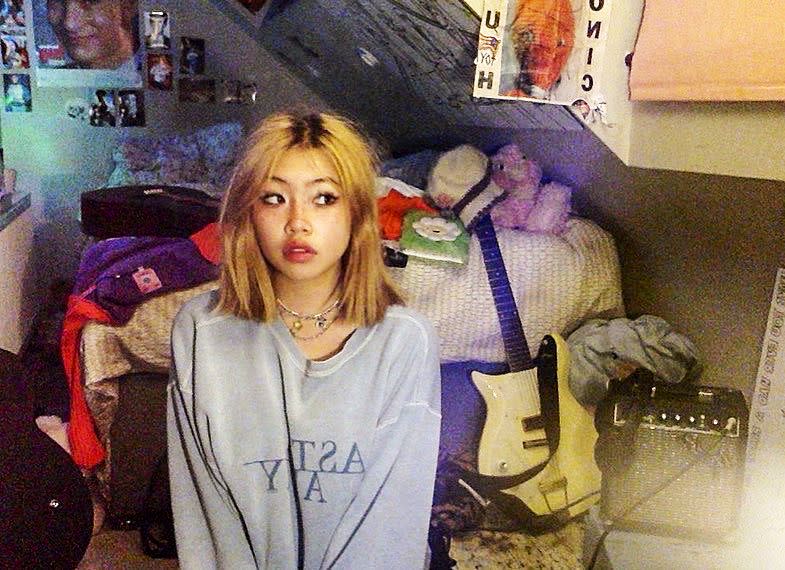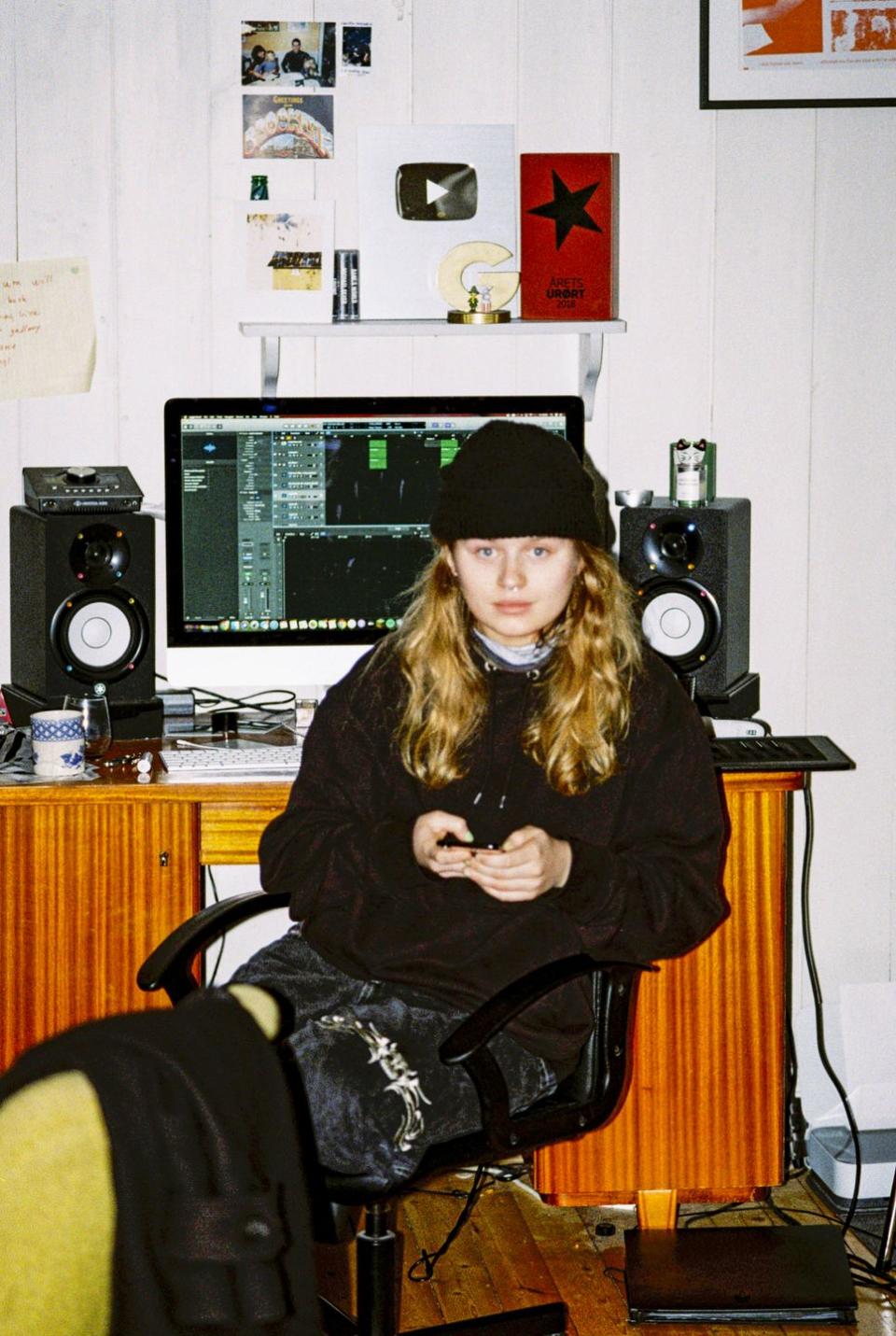Why Bedroom Pop Songs Have Become the Anthems of Quarantine

Sure, fine, yes, bedroom pop—lo-fi, angsty jams produced in young people’s bedrooms—is not a brand-new concept. (Billie Eilish first recorded music from her parents’ house before she swept the Grammys, remember?) But the genre has gotten extra popular in 2020, to the point that it's permeated TikTok and viral songs like Powfu's "death bed (coffee for your head)" are charting on the radio alongside Taylor Swift and Harry Styles.
Further proof it's more relevant: There were 145,000 new SoundCloud uploads from DIY and emerging artists with COVID-related hashtags and keywords on the platform, and the Spotify "Chill Vibes" playlist, which features artists in this genre, saw a major uptick in followers since quarantine restrictions earlier this year. Spotify editor Lizzy Szabo explains that because of the circumstances, fans feel the most connected to musicians and have had more interaction with them (*cough cough*, Men's Health) than ever before. "Knowing the artist is channeling true, personal feelings through their art is very compelling to listeners."
Essentially, the rougher guitar chords, vulnerable lyrics, and often nostalgic-sounding tunes that are typical of bedroom pop have resonated even more with listeners during a worldwide pandemic when everyone is spending way more time at home and wanting an escape.

Twenty-year-old Bea Kristi, who you may know as beabadoobee, wrote a song a day while quarantined at her parents’ place in London, and says she does most of her song writing in her room, which, for the record, is covered with throwback posters of Leo DiCaprio, Taxi Driver, The Beatles, and, most prominently, Tom Hanks in the movie Big. "I honestly think it's the comfort of this space and the arched walls and the warm lighting and all my stuffed toys and the messiness of everything." She recently released two songs, "Care," and "Sorry," which are from her upcoming album Fake it Flowers, and performed both live at home.
Like Kristi, many of the emerging bedroom pop artists are young millennials or even younger zoomers, energized by the fact that recording, producing, and releasing a song has never been easier with an iPhone, mixing software, and a SoundCloud, Youtube, and/or TikTok account to upload their creations. Artists like Clairo, mxmtoon, and Surf Mesa, know exactly how to wield the power of the internet to create breakout hits and gain huge fan bases.

As for the actual sounds, there's no scientific way to describe it other than I feel like I've suddenly been transported to 2007 listening to this genre? "I would say I'm a very nostalgic person," says 20-year-old singer Audrey Mika. "I think that comes through with my vocals—and also, production wise, I love having this dreamy sound." And the more recent popularity of this music ties together with the fact that the everyday news cycle and overall state of the world is so stress inducing. There's something really nice about music that transports you to simpler times.
Heather Mundinger, Music Marketing and Curation Manager at SoundCloud, says that people just want to relax and have wistful memories of the past—whether it's the listeners or the musicians. And this idea even blends into the visuals that are released alongside the tracks, which are reminiscent of early 2010s or early aughts Tumblr, she says. To achieve this effect, many bedroom pop artists use their webcams or are drawn to lower-quality, grainy filters that resemble home videos—a distinctive look, although sometimes there's no deep explanation as to why. Marie Ulven (aka girl in red), 21, says she uses Photo Booth often just because it's so accessible and easy to use.

And because of this accessibility, artists like girl in red, Audrey Mika, and beabadoobee start with zero backing from record labels—they learned how to play their instruments from YouTube, taught themselves how to use the equipment, built up followings on their social platforms, and charted their own course in the industry. They're all signed now, but others have chosen to stay solo. Take Curtis Waters. He debuted “Stunnin’” on TikTok in April, received millions of views between there and YouTube, and has since turned down representation offers. “I didn’t agree with the deals [I was being offered],” Waters said in a recent Rolling Stone interview. “I came so far independently. I’m not sure the major labels are giving artists what they really need.”
Now that Reels is bringing an even wider audience to the world of short videos in its quest to become the new TikTok, you can bet even more DIY and bedroom pop artists will flock to the video service, creating and releasing their songs to a new audience. Although one thing to keep in mind, based on my convos with these artists: Maybe don't call it bedroom pop? For one thing, Szabo says it may be associated with a lower production quality, or it could have an amateurish implication, and besides that: “I don’t even like the term. I don’t like labels,” says Ulven. Which, fair. Maybe we can just call it...really good music?
Listen to the playlist below for some amazing jams
*A version of this story appeared in the Cosmopolitan July/August issue.
You Might Also Like

